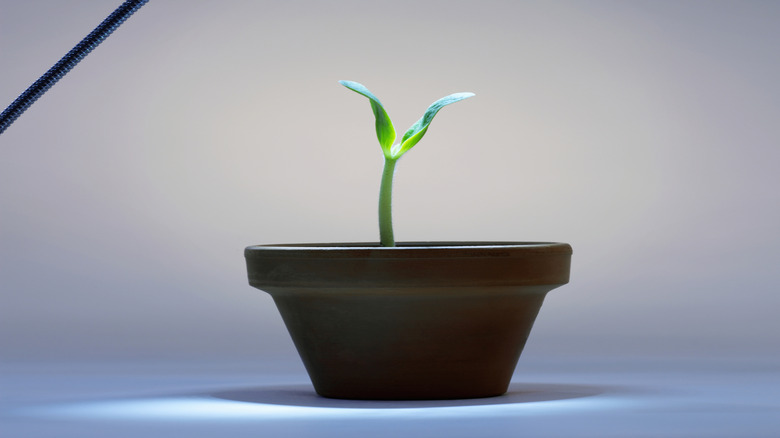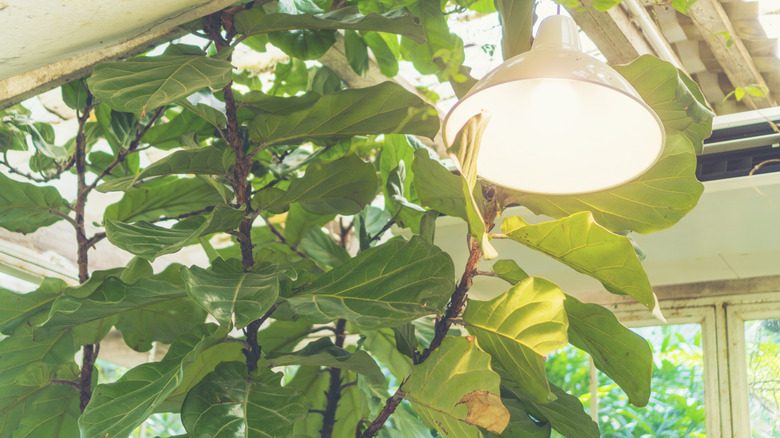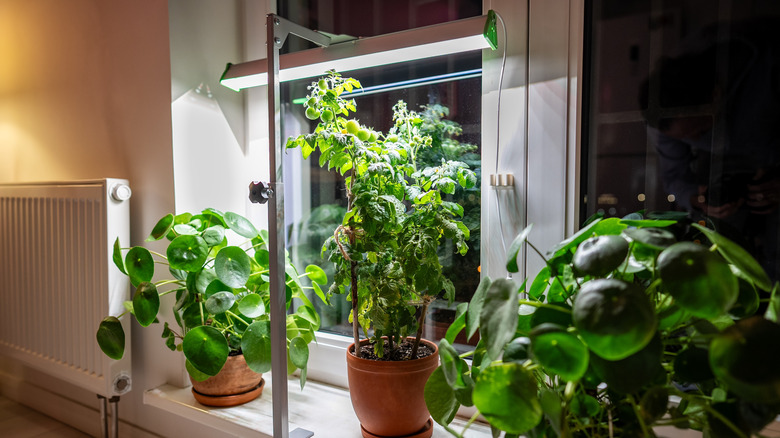Do Grow Lights Help Houseplants Flourish? Our Master Gardener Enlightens Us
We may receive a commission on purchases made from links.
Anyone who's accidentally killed a houseplant (so, everyone) knows that it can be tricky to deliver just the right amount of light to your beloved plants. Too little and the plants may drop leaves, grow pale or leggy, or eventually die. Your house might not have the brightest, sunniest windows on offer, but you can supplement sunlight with grow lights to make an enormous difference in your plants' health, according to House Digest's Garden Editor and in-house Master Gardener, Tiffany Selvey.
Plants need adequate light to grow and reproduce, and houseplants can struggle to get enough sunlight for a range of reasons. Perhaps your window doesn't get many hours of bright sunshine, or maybe there are objects in the way, as in Selvey's case. The Master Gardener exclusively tells House Digest, "I quickly discovered my house just doesn't get enough natural light to support the kinds of plants I want to grow. Although we have lots of windows, we are surrounded by shade trees, so even low-light plants, like my pothos, were just surviving."
In the wild, plants must get sufficient light from the sun or perish. Your houseplants are luckier — you have the freedom to spoil them all you like, so even if your house's light levels aren't conducive to their growth, they can thrive. Using grow lights is an essential part of that equation.
Only some plants need grow lights
First things first: Determine whether grow lights are right for your specific houseplants. That depends on what type of plants you have, how much light they require, and how much your windows already provide. In, this exclusive exchange with House Digest, Tiffany Selvey notes that her sun-loving orchids and succulents were struggling, and so were her low-light-tolerant plants like pothos and easy-to-grow begonias.
Check the light requirements for your plants and take note of their current condition — are they growing quickly, slowly, or not at all? "If you have plenty of natural light from a south-facing window, you may not need grow lights," Selvey says. "But if you notice your houseplants just aren't thriving in dim conditions, grow lights are an inexpensive way to perk them up."
Maybe your entire plant collection could use a light boost, or maybe some of your plants need more light than others. There are plenty of different styles of grow lights available that allow you to deliver the right amount of light to each individual plant.
Choosing a grow light
Speaking exclusively with House Digest, Tiffany Selvey says that after trying a few different types of grow lights, she settled on full-spectrum Plant Grow Light Strips, as these are the only ones to have a noticeable effect on her plants' growth. "Since these strips are narrow and can be affixed to almost anything, they remove the bulky part of the light fixture and just provide clean light," she says.
Strips work particularly well for lighting up entire groups of plants. On the other hand, you can get something smaller if you only have a couple of plants that need supplemental light. "For one or two plants, a clip on or single light option might be best," Selvey says. "If you're like me and keep most of your collection grouped together on shelves, you can't beat the convenience of grow strips."
The best grow lights for year-round use are "full-spectrum," which means that they provide light in a range of wavelengths to mimic sunlight. "I also like dimmable options so my eyes aren't accosted by painfully bright LEDs when I turn them on," Selvey adds. Don't forget to establish a lighting schedule so your plants get the right amount of light as well as darkness each day.


